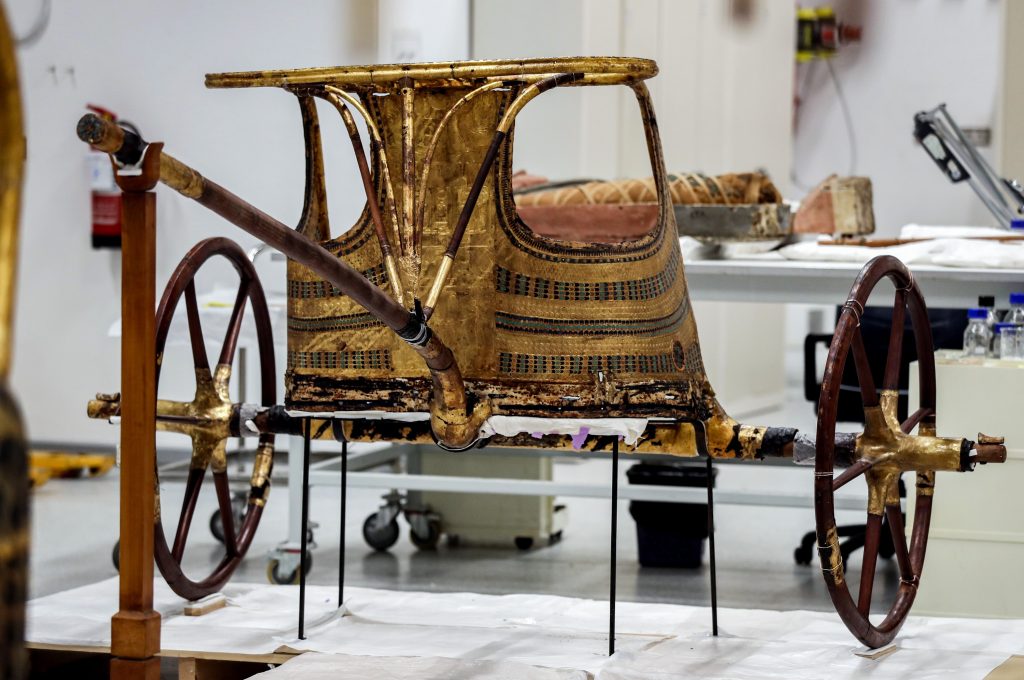
- ARAB NEWS
- 26 Apr 2024

Mohamed El-Shamaa
CAIRO: Construction of the colossal but much-delayed new Giza museum has moved closer to completion following meetings between Egyptian officials and Japanese backers of the project.
Egyptian Minister of Antiquities Khaled El-Anany recently met Japan’s Ambassador to Egypt Masaki Noke in Cairo to discuss progress on the showpiece Grand Egyptian Museum (GEM).
The vast museum, which has been hit by a series of setbacks since building work began in 2006, is scheduled to open in the final quarter of 2020. The GEM is part of an Egypt-Japan cultural partnership involving Japanese loans worth $750 million.
The latest discussions in the Egyptian capital, which included a Noke-led delegation of officials from the Japanese Embassy in Cairo and representatives of the Japan International Cooperation Agency (JICA), were aimed at finalizing preparations for the run-in to the museum’s inauguration.
The meeting also looked into the possibility of Japan providing technical assistance to operate the GEM following its opening.
An initial $280 million loan from Japan toward the project was received by Egypt in 2006, followed by a second advance of $460 million to complete the GEM by the end of 2016. A deal had been reached with the Egyptian government over repayment of the loan over 25 years.
If the current negotiations end in agreement, total lending by Japan on the project could rise significantly.
The GEM had originally been due to be open to visitors in 2015, but protests in Egypt coupled with a big drop in tourism delayed work.
Sometimes referred to as Egypt’s gift to the world, the GEM is one of the north African country’s national megaprojects and a model of Egyptian-Japanese partnership in the fields of culture and archaeology.
More than 48,000 artifacts have already been moved to the museum and Japan has extended its support in the restoration of monuments while also providing state-of-the-art technology for exhibit displays.
Archaeologist Ahmed Nabih said Japanese help in establishing the GEM was “accelerating the process of its construction.” He described the museum as a “great place” that would attract tourists from around the world.
Amira Gad, an economic affairs journalist, said any possible new loans that Egypt might receive to complete the GEM could further burden the state and increase its foreign debt which was already running at more than $1 trillion.
However, revenue earned from the museum following its inauguration would hopefully cover its costs and could perhaps even contribute to it making a profit, Gad added.